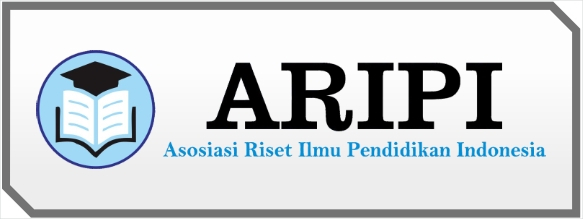Evaluating the Economics Education Framework Within the Merdeka Curriculum at the Ecd Level: Case Study at Kharisma Kindergarten
DOI:
https://doi.org/10.61978/eduscape.v2i3.439Keywords:
Early Childhood Education, Economics Education, Merdeka Curriculum, Loose Part MediaAbstract
Education is of paramount importance in shaping a nation's character. This is particularly relevant in Indonesia, where the President of Indonesia has prioritized the Merdeka Curriculum across all levels of education. This curriculum is being implemented at the early childhood education (ECD) level following government policy guidelines in Permendikbud ristek Number 5/2022. This research uses a qualitative case study research method with the CIPP evaluation model at Kharisma Kindergarten Malang to investigate the evaluation of the implementation of economic learning in the Merdeka Curriculum in ECD education. The study employed purposive sampling to select Kharisma Kindergarten Teachers in Malang, School Supervisors in Malang Regency, and the Head of the Early Childhood Education Section in Malang Regency. The results of qualitative research using the triangulation method show that the Merdeka Curriculum has been implemented 90% at the kindergarten level. In detail, the results of interviews with the head of curriculum at Kharisma Kindergarten show that the Merdeka Curriculum was implemented at school 100% in 2024. However, the researchers identified obstacles regarding teacher and parent paradigms and limited facilities, which prevented the curriculum from being successfully implemented. Therefore, teachers, parents, and students need to accept new teaching methods and ideas if the Merdeka Curriculum is to work well in ECD education.
References
A Spencer, R., Joshi, N., Branje, K., Lee McIsaac, J., Cawley, J., Rehman, L., Fl Kirk, S., Stone, M., 1 School of Health & Human Performance Dalhousie University Halifax Canada, 2 Faculty of Education, of Child, D., Youth Study Mount Saint Vincent University, H. C., & 3 Healthy Populations Institute Dalhousie University Halifax Canada. (2019). Educator perceptions on the benefits and challenges of loose parts play in the outdoor environments of childcare centres. AIMS Public Health, 6(4), 461–476. https://doi.org/10.3934/publichealth.2019.4.461 DOI: https://doi.org/10.3934/publichealth.2019.4.461
Abdimas, J., & Zaenab, ; &. (2023). Pendampingan Persiapan dan Pelaksanaan Kurikulum Prototipe di SMP Muhammadiyah 02 Kota Batu. Journal of Community Service), Februari 2023, 5(1), 223–243. https://doi.org/10.36312/sasambo.v5i1.1118 DOI: https://doi.org/10.36312/sasambo.v5i1.1118
Agustina, N. Q., & Mukhtaruddin, F. (2019). The Cipp Model-Based Evaluation on Integrated English Learning (IEL) Program at Language Center. Engl.Lang.Teach.Educational.J, 2(1), 22. https://doi.org/10.12928/eltej.v2i1.1043 DOI: https://doi.org/10.12928/eltej.v2i1.1043
Alimuddin, J. (2023). Implementasi Kurikulum Merdeka di Sekolah Dasar. j.il.kontekstual, 4(02), 67–75. https://doi.org/10.46772/kontekstual.v4i02.995 DOI: https://doi.org/10.46772/kontekstual.v4i02.995
Aluwihare-Samaranayake, D. (2012). Article Ethics in Qualitative Research: A View of the Participants’ and Researchers’ World from a Critical Standpoint. IJOM, 11(2), 64–81. DOI: https://doi.org/10.1177/160940691201100208
Anggraeni, A., & Soepriyanti, H. (2023). How Teachers Interpret And Implement Independent Curriculum: Lesson Learnt From The Field. Bhinneka: Jurnal Bintang Pendidikan Dan Bahasa, 1(3), 1–12. DOI: https://doi.org/10.59024/bhinneka.v1i3.176
Coşkun, H., & Durakoğlu, A. (2015). A PROJECT-BASED APPROACH IN CHILD EDUCATION: REGGIO EMILIA. International Journal of Humanities and Education, 1(2), 141–153.
Hakan, K., & Seval, F. (2011). CIPP evaluation model scale: development, reliability and validity. Procedia - Social and Behavioral Sciences, 15, 592–599. https://doi.org/10.1016/j.sbspro.2011.03.146 DOI: https://doi.org/10.1016/j.sbspro.2011.03.146
Hariyani, I. T., Sulistiyani, S., Soemarmi, S., & Rz, F. (2023). The Implementation of Merdeka Curriculum Towards Early Childhood Education. Educative, 1(3), 143–153. https://doi.org/10.37985/educative.v1i3.152 DOI: https://doi.org/10.37985/educative.v1i3.152
Hewett, V. M. (2001). Examining the Reggio Emilia Approach to Early Childhood Education. Early Childhood Education Journal, 29(2). DOI: https://doi.org/10.1023/A:1012520828095
Intanuari, A. M. (2020). Dampak Pandemi Covid-19 Pada Pembelajaran Siswa Sekolah Dasar.
Lee, S. Y., Shin, J.-S., & Lee, S.-H. (2019). How to execute Context, Input, Process, and Product evaluation model in medical health education. J Educ Eval Health Prof, 16, 40. https://doi.org/10.3352/jeehp.2019.16.40 DOI: https://doi.org/10.3352/jeehp.2019.16.40
Marzuki, M., & Samsuri, S. (2022). The strategy of three education centers for strengthening character education in Indonesia in the era of Industrial Revolution 4.0. Jurnal Civics: Media Kajian Kewarganegaraan, 19(1), 119–133. https://doi.org/10.21831/jc.v19i1.40325 DOI: https://doi.org/10.21831/jc.v19i1.40325
Natsir, E. (2021). Problematika Guru dan Siswa dalam Proses Pembelajaran Daring pada Masa Pandemi Covid-19 di UPTD SMP Negeri 1 Parepare. AL MA’ ARIEF: JURNAL PENDIDIKAN SOSIAL DAN BUDAYA, 3(2), 2021. DOI: https://doi.org/10.47783/jurpendigu.v2i1.186
Nursaputri, E. R., & Sabat, Y. (2023). KINDERGARTEN TEACHERS’ READINESS IN IMPLEMENTING KURIKULUM MERDEKA. AoEJ, 14(2), 531–544. https://doi.org/10.47200/aoej.v14i2.1715 DOI: https://doi.org/10.47200/aoej.v14i2.1715
Purnamasari, M. (2022). Holistic-Integrative ECE Program Management at PAUD Terpadu Negeri 1 Rumah Cinta. Indonesian Journal of Early Childhood Education Studies, 11(1).
Putri, R. (2017). PENGARUH KEBIJAKAN PERUBAHAN KURIKULUM TERHADAP PEMBELAJARAN DI SEKOLAH. Universitas Negeri Padang.
Qiptiah, M. (2023). PENERAPAN KURIKULUM MERDEKA DAN MBKM (Merdeka Belajar Kampus Merdeka) DALAM KONDISI PENDIDIKAN INDONESIA SAAT INI. Universitas Lambung Mangkurat, 1(1). DOI: https://doi.org/10.31237/osf.io/z4x2u
Selamat Ariga. (2022). Implementasi Kurikulum Merdeka Pasca Pandemi Covid-19 Selamat Ariga Sekolah Tinggi Agama Islam Sepakat Segenep (STAISES) Kutacane Aceh Tenggara Implementation of the Independent Curriculum After the Covid-19 Pandemic. Jurnal Pusramdis SUMUT, 662–670. https://jurnal.permapendis-sumut.org/index.php/edusociety DOI: https://doi.org/10.56832/edu.v2i2.225
Shalehah, N. A. (2023). Implementasi Kurikulum Merdeka Melalui Model Project Based Learning di Satuan PAUD. slamic EduKids: Jurnal Pendidikan Anak Usia Dini, 5(1). DOI: https://doi.org/10.33387/cp.v5i1.6043
Tono Supriatna Nugraha. (2022). Kurikulum Merdeka untuk Pemulihan Krisis Pembelajaran Tono Supriatna Nugraha. Inovasi Kurikulum, 19(2), 251–262. https://ejournal.upi.edu/index.php/JIK DOI: https://doi.org/10.17509/jik.v19i2.45301
Ummi Inayati. (2022). Konsep dan Implementasi Kurikulum Merdeka pada Pembelajaran Abad-21 di SD/MI. 2st ICIE: International Conference on Islamic Education, 2, 293–304.
Wahdaniyah, N., Agustini, R., & Tukiran, T. (2023). Analysis of Effectiveness PBL-STEM to Improve Student’s Critical Thinking Skills. IJORER Int. J. Recent Educ. Res., 4(3), 365–382. https://doi.org/10.46245/ijorer.v4i3.312 DOI: https://doi.org/10.46245/ijorer.v4i3.312
Wahyuni, S., Liza, L. O., Syahdan, Rusandi, M. A., & Situmorang, D. D. B. (2023). ‘Treasure hunt’: Using loose parts media to develop social financial education model for early children. Heliyon, 9(6), e17188. https://doi.org/10.1016/j.heliyon.2023.e17188 DOI: https://doi.org/10.1016/j.heliyon.2023.e17188
Warju, W. (2016). Educational Program Evaluation using CIPP Model. INVOTEC, 12(1). https://doi.org/10.17509/invotec.v12i1.4502 DOI: https://doi.org/10.17509/invotec.v12i1.4502
Yatim, H., Jamilah, J., Sahnir, N., & Abduh, A. (2023). Analysis of Habituation in Implementing the Merdeka Belajar Curriculum in Art Education in Schools. JA, 10(1), 111. https://doi.org/10.26858/ja.v10i1.45310 DOI: https://doi.org/10.26858/ja.v10i1.45310
Yuliyanto, R., & Yamin, R. D. (2022). The Impact of Learning Loss During a Pandemic Among Students. JASSP: Journal of Advance in Social Sciences and Policy, 2(2), 70–81.







